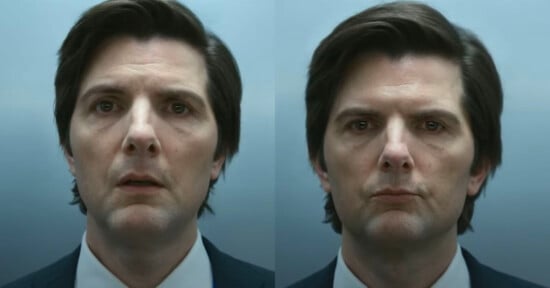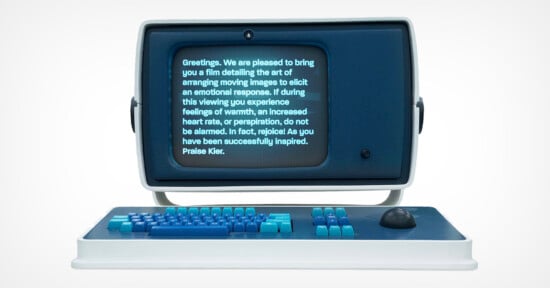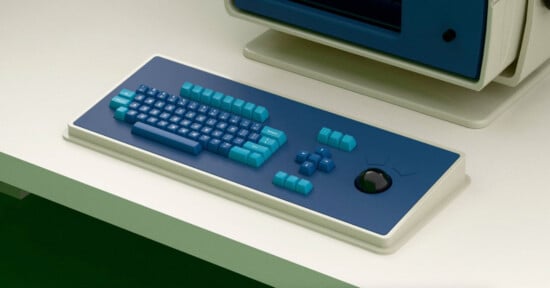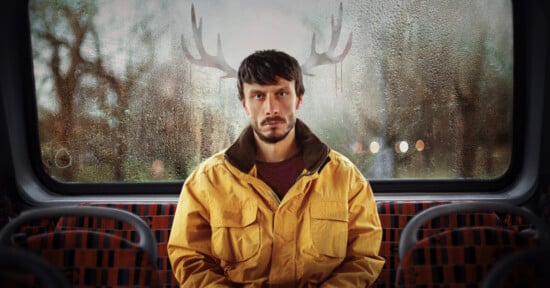How Cinematographer Jessica Lee Gagné Crafted the Look of ‘Severance’
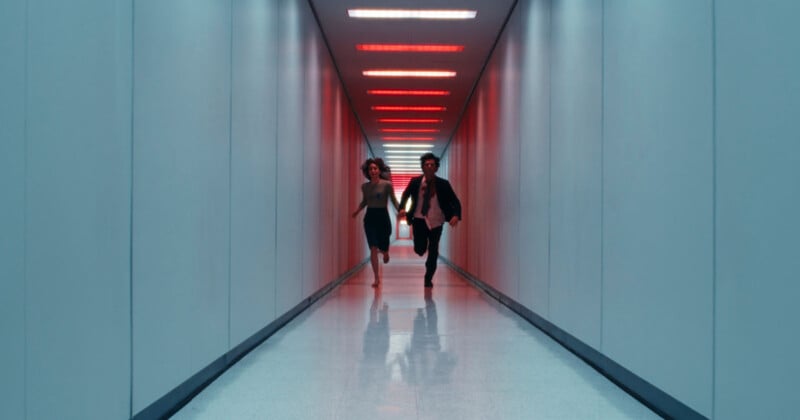
Apple TV’s hit series Severance is celebrated for its engaging story, incredible acting performances, and striking visuals. PetaPixel spoke with Severance cinematographer Jessica Lee Gagné, one of the masterminds behind the show’s eye-catching aesthetic, clever camera shots (like the iconic elevator transition zoom dolly sequence), and, as of season two, direction as well.
Our podcast team also spoke with Jessica Lee Gagné this week about even more topics, including how Gagné works differently as a cinematographer versus director, what makes something look “cinematic,” how lens choices affect the mood of Severance, robotic cameras, and much more.
Creating Severance Requires a Passionate Team
Gagné, who has over 40 cinematography credits to her name, including for television miniseries Escape at Dannemora and Mrs. America, is an integral part of the creative process behind Severance, earning a well-deserved producer credit for season two and directing season two’s landmark episode seven, “Chikhai Bardo.” Gagné’s contributions go far beyond what is typical of a show’s cinematographer, a testament to her passion and dedication to the craft.
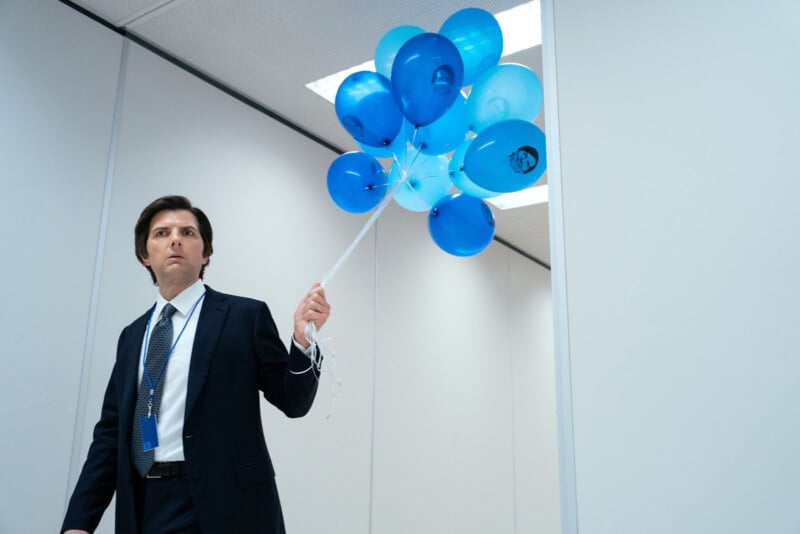
As she tells PetaPixel, much of what makes Severance so special and successful is that everyone involved with the show loves it — they are committed to bringing the show to life in the best possible way and care deeply about the story.
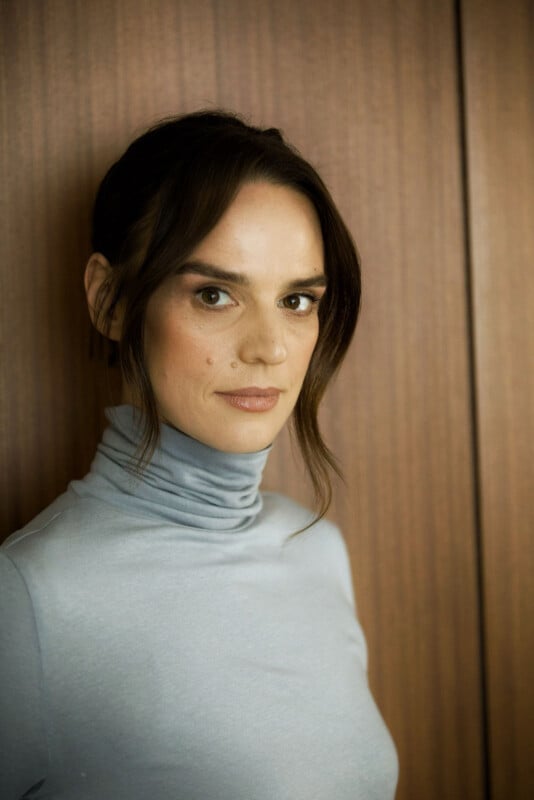
“The people who work on the show really care about. Everyone’s a fan of the show, and that just a delivers a whole other thing,” Gagné says. “Even in season one, because the show wasn’t out people couldn’t really be a fan of the show, but they were all excited about the aesthetic, the world and the weirdness of it, and what Dan [Erickson] had been writing. So everyone was just fascinated by it.”
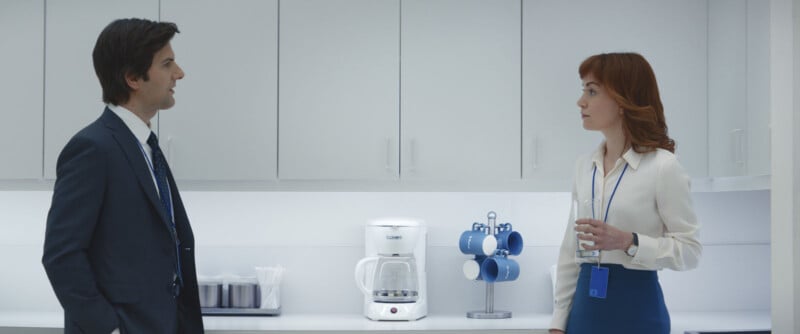
Jessica Lee Gagné’s Directorial Debut
This desire to make Severance the best it can be is a significant part of what makes Gagné’s directorial debut on “Chikhai Bardo” such a smashing success. At the risk of spoilers for those who have not seen the episode, it focuses heavily on the past as the characters Mark and Gemma meet and build their relationship. The episode features moments Severance has been building toward since the beginning.
“There’s a lot of pressure on delivering the ‘past.’ I cared about it so much, and I gave it so much of my own personal time,” Gagné explains. “I feel like that’s what it needed, because if it was another director coming on to do it, they wouldn’t have had that — I am there the whole time. I’m constantly working on it and taking care of it and making sure we don’t forget about [episode] seven the whole. I was like, ‘What about seven?'”
A big part of the visual language of episode seven is the sequences shot on film. While the rest of Severance is shot on digital cameras, Gagné opted for film for flashback sequences in “Chikhai Bardo.”
“It has to be unconscious — [the look] has to be subconsciously affecting people in terms of how they feel when they watch something,” Gagné says. “For episode seven, using film for the flashbacks — what I was trying to do is make it feel like a flashback without actually putting some kind of filter on it because that cheapens it sometimes.”

Gagné knows not everyone has access to film, it is expensive and challenging to shoot as she knows firsthand, but nailing the mood using analog technology was well worth it.
She was not immune to the risks of working with film for “Chikhai Bardo,” either.
“I really didn’t use VFX much for the film stuff. It was quite simple. There are stitches where there’s VFX work that’s very obvious, and there’s this fun timelapse sequence. That whole timelapse was a proper old-school film school-style timelapse stuff. Literally a camera was moving around the room and people in the art department were putting books, taking books away, and then we were shooting all these shots. A lot of people participated in that,” Gagné recalls.
At the end of the wrap shot around Mark’s desk, the dinner table scene with Mark, Gemma, Devon, and Ricken fades in. Gagné explains this was all done in-camera by shooting over the existing film.
“That’s actually an in-camera fade-in,” the cinematographer-turned-director exclaims.
“I remember being there with the assistant camera and director of photography and we were like, ‘How many seconds did we shoot?’ We were doing math on a piece of paper, and I just said, ‘We need to shoot.’ It was just really messy,” Gagné says.
Their hard work paid off in a big way because the scene was not only spectacular for the viewer, but the production team was also blown away. The VFX department thought the source had already been edited.
“They were really surprised we had actually done this for real. That was all in camera, that is something we try to do as much as possible in Severance.
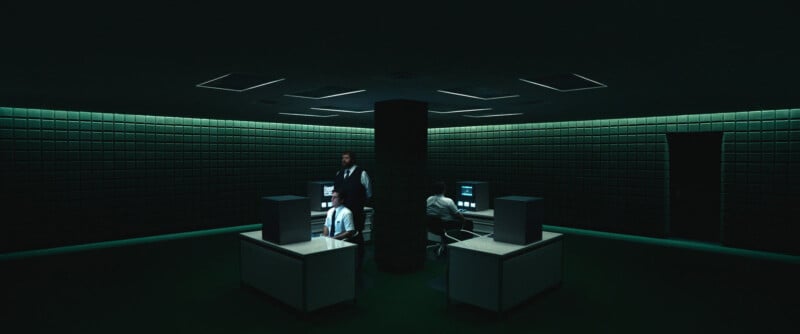
While it worked out, Gagné says that on the last day of shooting, she and the team found out that the previous day had a film shot that was either too soft or that something was wrong with the camera’s mechanism. Something had gone awry.
“I’m like ‘oh my god,’ and they are like, ‘you should reshoot,’ and producers are saying ‘we have to reshoot,'” Gagné explains. At this time, she’s still on set, and it’s wrap day. People want to finish the work. So Gagné is on the phone with the technician doing the film scans and trying to figure out, without seeing the results, what was wrong with the shots.
“I’m like, ‘Describe what’s wrong with the image to me,’ and he described it to me. I say, ‘Okay, it’s a little soft, but the shot’s fine.’ We had that communication; we ran through each shot we had done. They zoomed in on them to see how out of focus it was, and just on the phone, I determined we didn’t need to reshoot,” Gagné says. “The crew would have killed us.”
“We’re just going to trust that it’s fine. And everything was fine, but those shots are painted soft.”
Gagné specifically calls out colorist Tom Poole, who has also worked on hit show Euphoria.
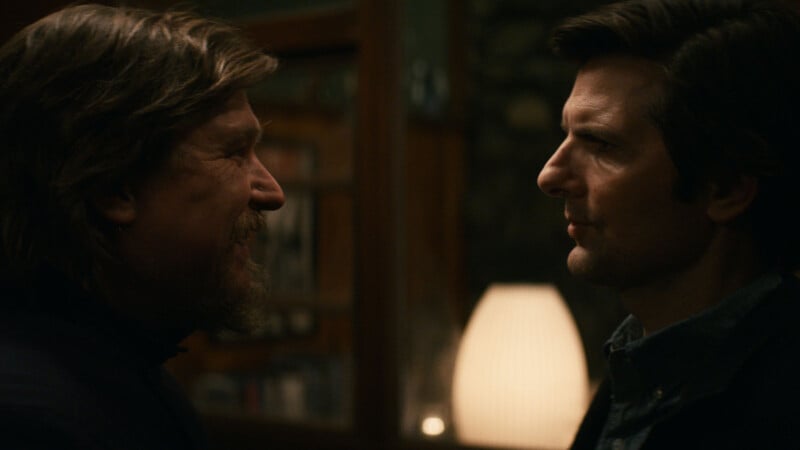
“Our colorist, Tom Poole, he’s like a magician. He’s a huge part of the look of Severance. I wish you could make an article just about him, but I can’t talk his talk — it’s a language I don’t talk. I just talk in feelings,” Gagné says. “But his print on [‘Chikhai Bardo’] is… he loves film and the way he treats film is beautiful. He pulls out that physical shape from the celluloid where things really feel real and human. I love his work.”
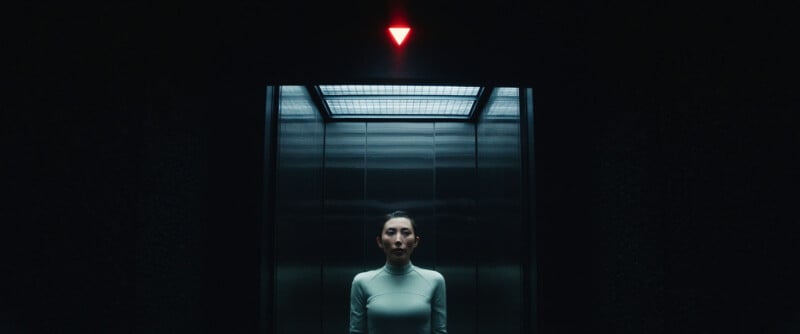
Establishing the ‘That’s So Severance’ Look and Feel
This speaks to the collaborative approach at the heart of Severance. Gagné and showrunner Ben Stiller, who has directed the majority of Severance‘s episodes, are in constant communication and work very closely.
Gagné’s involvement with the show has grown since pre-production on season one. Still, since the beginning, she has been instrumental in establishing the show’s visual language and what she calls “kind of established ‘rules,'” quotation marks hers.
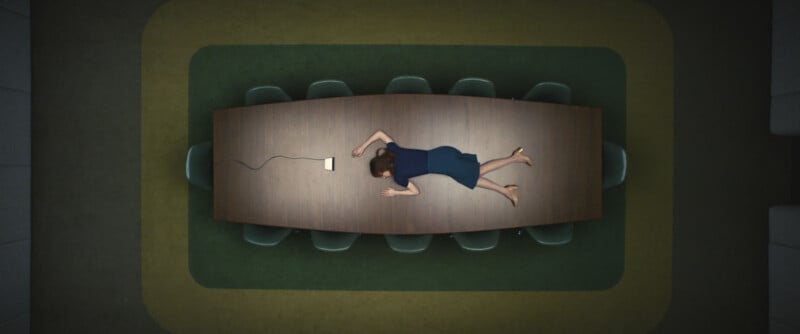
The initial world-building was the most fun for Gagné.
“I absolutely love that moment where you’re free, where you can really create with everyone and anything goes,” she says.
From there, the team — Stiller, Erickson, Gagné, production designer Jeremy Hindle, and essentially everyone else — work together to craft a cohesive visual language. No detail is too small, as every piece of every scene plays a role in engaging the viewer and ensuring the immersion is never broken.
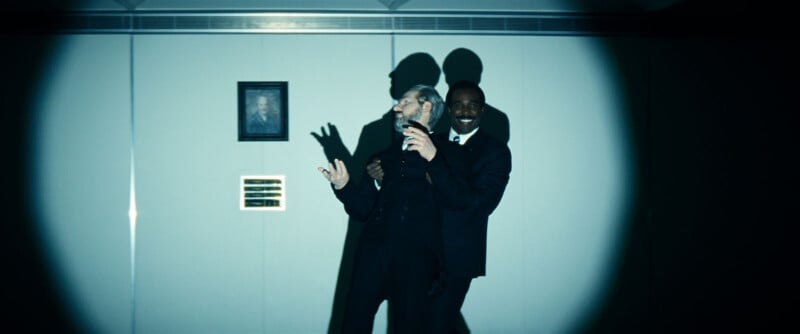
“We do many, many tests. We try out many things. We watch them all together one it’s been through the whole pipeline. We sit in this room watching it with the colorists and everyone is present: hair, makeup, costume, production, design. We’re all sitting there and commenting what feels right,” Gagné says.
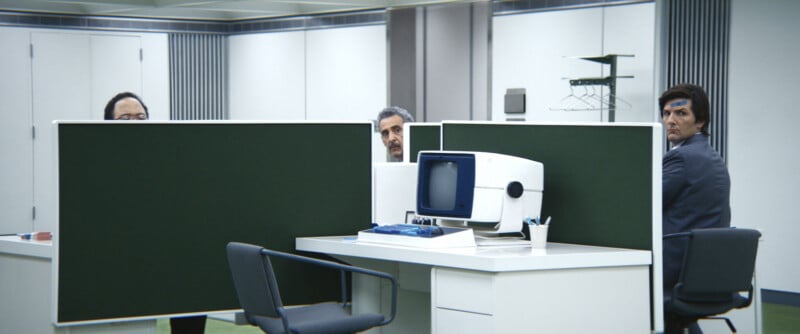
In season one, as everyone worked together to establish the feeling that Gagné and Stiller refer to as “that’s so Severance, Gagné set up a huge hallway at the office and put up all her mood boards for the first three episodes of the show. It featured production design plans, references, renderings, colors, and images from movies (Stiller and Gagné watch movies together and talk shop).
“People who were walking down that hallway would be able to see what the show would look like, and I remember catching people just looking at the stuff. They don’t always get that privileged view into what [a show or movie] is going to look like. But I think that the more people know about it, the better they can do their job,” Gagné says.
Some of her references include photography books like Lars Tunbjörk’s Office, Sites of Technology by Lewis Baltz, and Lynne Cohen’s aptly named Severance, which Gagné encountered while studying film and photography at Concordia University in Montreal.
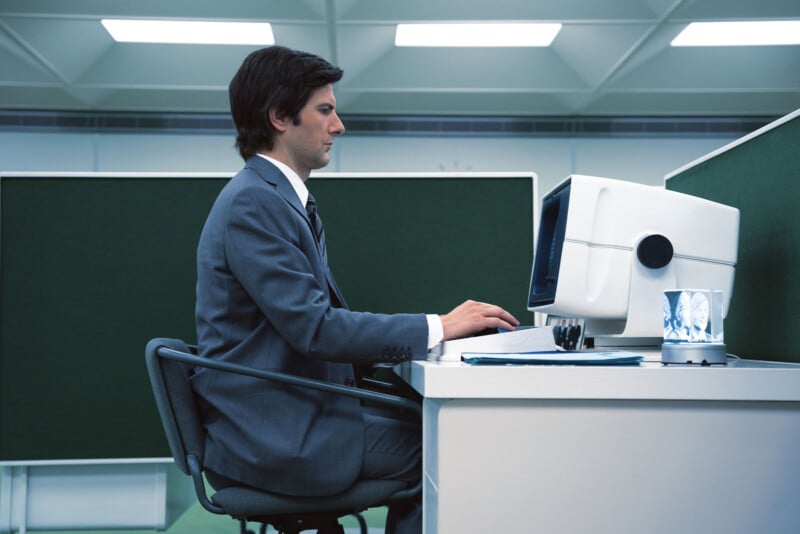
“I feel different about [references] in directing because I didn’t reference much for episode seven. I couldn’t find the right references because I think what I was trying to do was just my own thing. Because it was something you have to sign off on yourself, and I’m not having to express to anyone above me what I’m doing, I didn’t need it,” she says.
“I’m new to directing — I’m working on my first feature now — but I went to these bookstores I love to find [reference] books… they don’t exist. I think what I see in my head hasn’t been done, and I just have to do it for myself.”
Bringing Lumon’s Overbearing Interior to the Outdoors
For Gagné, who has been Severance‘s cinematographer since day zero and intimately involved with establishing its look and feel, which will no doubt inspire filmmakers for generations to come, there were other changes between seasons one and two. While the first season focused heavily on smaller, intimate interior spaces, whether in or outside Lumon, season two takes the show on the road, including rich outdoor spaces and expansive vistas.
Notable episodes include episode four, “Woe’s Hollow,” and episode eight, “Sweet Vitriol.” “Woe’s Hollow” follows the innies on an ORTBO, or “Outdoor Retreat Team Building Occurrence,” while “Sweet Vitriol” focuses on Harmony Cobel as she explores her past.
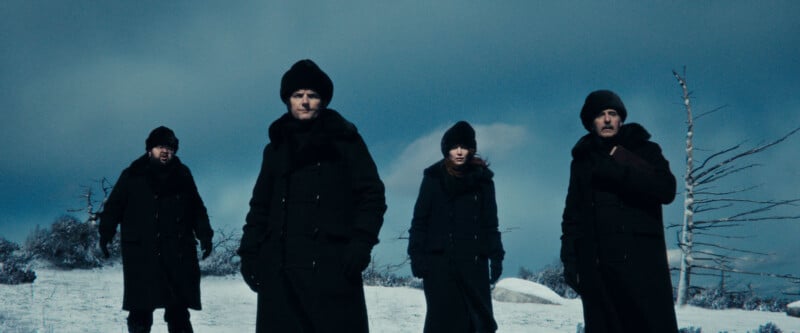
“For episode four, you could believe that’s on the outskirts of this town. Even though we did try to make every single scene its own little universe, and we tried to have differentiations within the landscapes, those places were all very close to each other. So it’s believable that it’s right out there,” Gagné explains.
“There are still some things that Lumon does that felt like followed through in these forest spaces — that airiness, the characters being so small within this big world, and even the use of trees to ‘cage’ them in these places,” she continues.
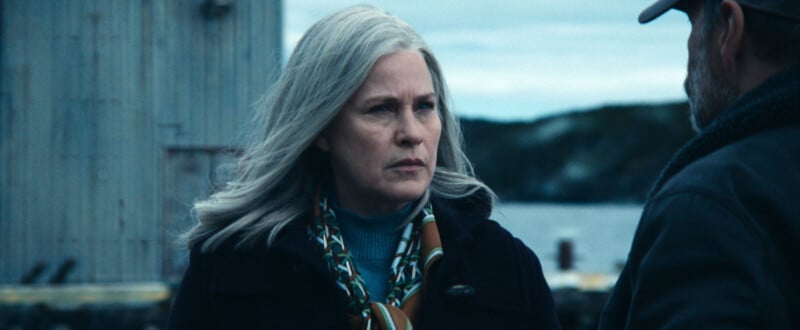
For Gagné, part of the process is finding what “feels” right in the moment. They don’t overly plan, but being able to make effective, successful decisions at the moment in the field is informed by all the broader prep work.
“Episode eight was shot in Newfoundland. I mean, I am personally obsessed with that place. I had shot a movie there before, so I knew what it was,” Gagné says. “Early on, when Ben was describing Cobel’s storyline, I was like, ‘Oh, she’s in Fogo.’ He’s like, ‘What’s Fogo?’ I’m like, ‘Google Fogo.'”
Fogo Island in Newfoundland and Labrador has what Gagné describes as “austere coldness.”
“It feels like a dangerous landscape. There is the age of the place. It just made sense [Cobel] would have been there.”
Gagné and the team pride themselves on shooting in places people would not instantly recognize. They had initially considered Iceland or Norway, but these locales would have been “too obvious and too recognizable.”
“Newfoundland’s more mysterious in that sense,” she adds.
Severance is a Visual Tour de Force
“There was fear because [Severance] was so weird and different,” Gagné says of the first season. “But anything that’s going to push those boundaries has a chance of reaching another level — really resonating with people in a new way.”
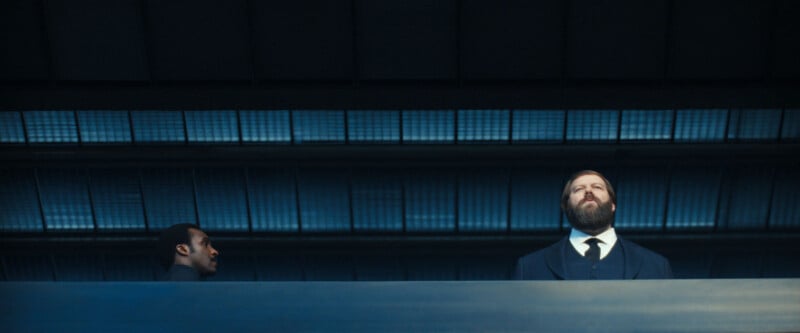
“I feel that’s something very special about Severance because we took those risks and we were allowed to go there. It gave way to a new feeling and a new type of thing,” Gagné continues.
While she admits she initially had fears about working on the show because of how much of it is shot in very controlled, artificial office spaces, she has found creative ways to establish an incredibly engaging show from a visual perspective.
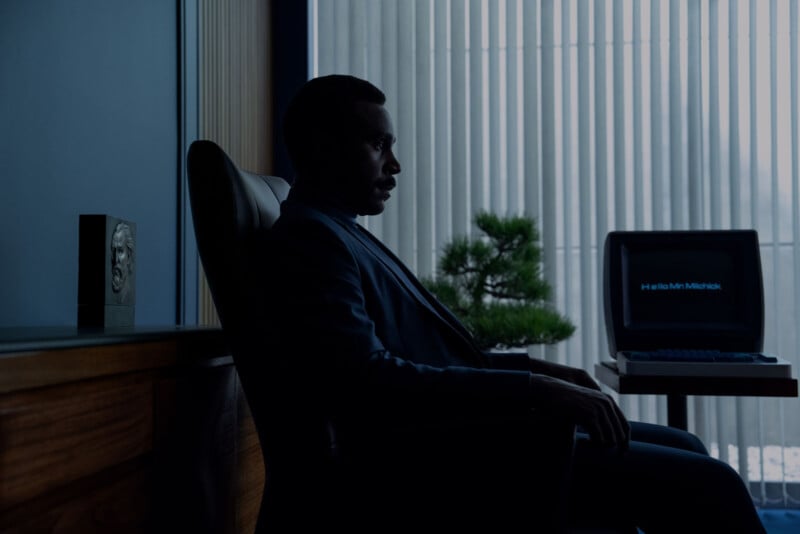
Beyond the show’s iconic “zolly” elevator transition shot, which combines a dolly and precise lens zoom to morph the look of a character as they transition from innie to outie, Gagné has heavily utilized dynamic camera movements, incredible composition, and very careful “rule breaking” to deliver a show that is filled to the brim with remarkable visuals.
“My style is based on a kind of gritty realism, and when things are overdone in an environment that already has a base light, or look, it loses its realness,” Gagné says. Finding the right balance inside Lumon proved a challenge, but one she seems very happy to have accepted.
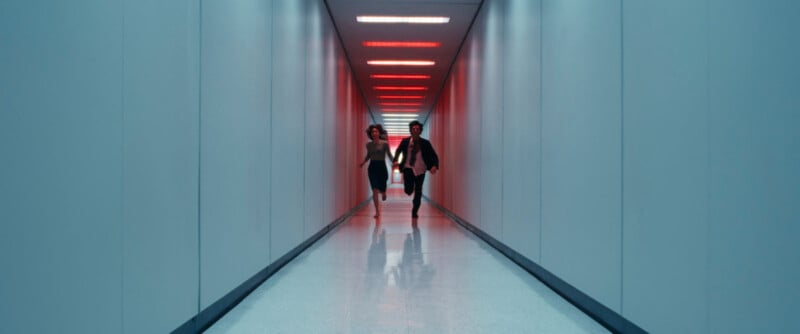
From the very first episode of season one through the season two finale that aired a few weeks ago, Severance has expertly navigated the bizarre liminal space between the protagonists’s “innie” and “outie.” Much of the show’s success at feeling equal parts authentic and surreal comes down to the show’s visual language, how Gagné has shot the show, and the talented people involved behind and in front of the camera.
Gagné and Stiller set out to create a rich, cohesive world. Through expert cinematography, directing, acting, and set design, they have succeeded. As millions of Apple TV+ subscribers now know, “That’s so Severance” means something, and very few shows can lay claim to that level of artistic and visual consistency.
Image credits: Courtesy of Apple
